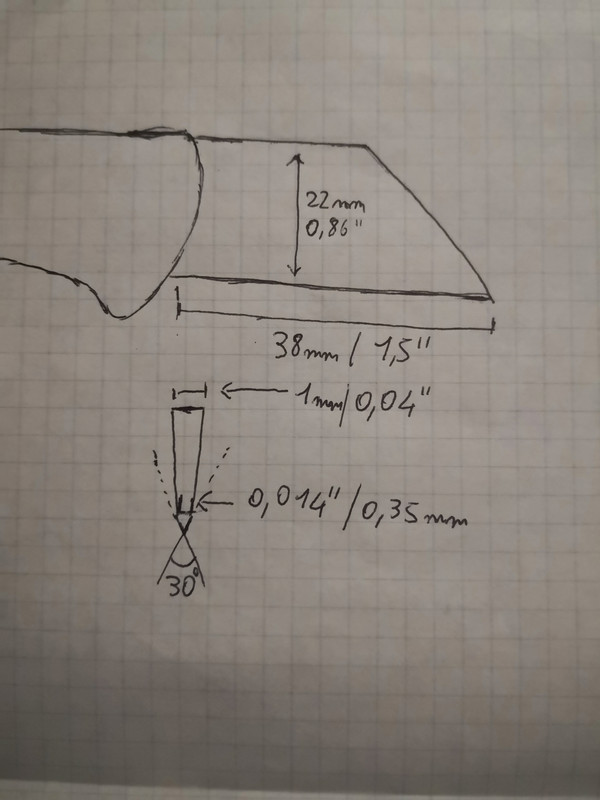- Joined
- Apr 20, 2019
- Messages
- 27
Hi guys!
In The place were i work we have to cut a huge amount of cardboard (fridge and refrigerator boxes) so i have made 2 D2 fixed blade box cutters.
utility knives are the Best Way to do this job, but i like to understand how much steels and geometry matters. These 62/63 Hrc d2 box cutters stay reasonably Sharp longer than regular(2weeks Vs 1), but edge tend to chip when meets clips... Unfortunatly sometimes happens.
So i want adjust geometry(d2 cutters geometry in pictures), steel (choosing from d6/m2/cpm-10v in annealed conditons because i have some scrap of these) and hardness, and make 2 new cutters.
I can give some additional information sayng this blades need to cut fast and bevel becomes very Hot (over water boilng Point), and the sharpening metod is only a fews steps on 600 Grit diamond disk.
Thanks
 [/url][/IMG]
[/url][/IMG]


In The place were i work we have to cut a huge amount of cardboard (fridge and refrigerator boxes) so i have made 2 D2 fixed blade box cutters.
utility knives are the Best Way to do this job, but i like to understand how much steels and geometry matters. These 62/63 Hrc d2 box cutters stay reasonably Sharp longer than regular(2weeks Vs 1), but edge tend to chip when meets clips... Unfortunatly sometimes happens.
So i want adjust geometry(d2 cutters geometry in pictures), steel (choosing from d6/m2/cpm-10v in annealed conditons because i have some scrap of these) and hardness, and make 2 new cutters.
I can give some additional information sayng this blades need to cut fast and bevel becomes very Hot (over water boilng Point), and the sharpening metod is only a fews steps on 600 Grit diamond disk.
Thanks




